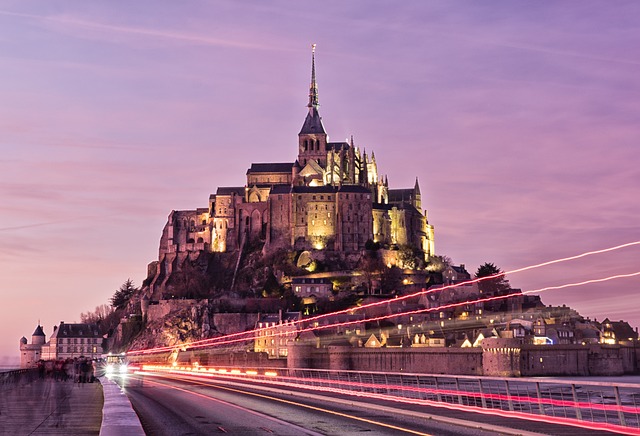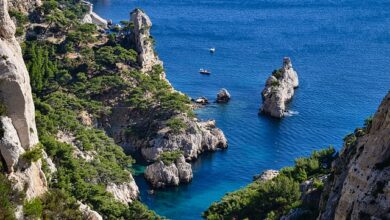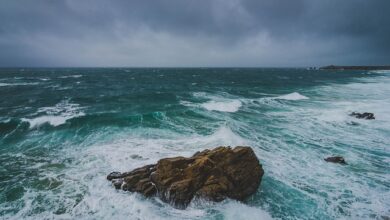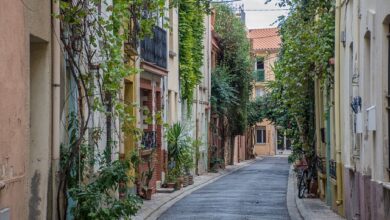The Most Beautiful Castles and Palaces in France

France, renowned for its rich history, culture, and architectural splendor, is home to some of the most breathtaking castles and palaces in the world. From medieval fortresses perched atop rugged hills to opulent royal residences nestled amidst lush gardens, these structures are not just monuments of stone but living testaments to centuries of artistry, power, and romance. Whether you’re a history enthusiast, an architecture lover, or simply someone seeking beauty and inspiration, exploring France’s castles and palaces promises an unforgettable journey through time. In this article, we delve into the most stunning examples of French châteaux and palaces that continue to captivate visitors from around the globe.
1. Château de Versailles: The Epitome of Royal Grandeur
No discussion about French palaces would be complete without mentioning the iconic Château de Versailles. Located just outside Paris, this UNESCO World Heritage Site was once the seat of political power during the reign of Louis XIV, also known as the “Sun King.” The palace is synonymous with extravagance, featuring over 700 rooms adorned with gilded ceilings, intricate frescoes, and priceless works of art.
The Hall of Mirrors, with its glittering chandeliers and 357 mirrors reflecting light across the room, remains one of the most famous interiors in the world. Outside, the sprawling Gardens of Versailles—designed by André Le Nôtre—are a masterpiece of symmetry and elegance, featuring fountains, sculptures, and meticulously manicured hedges. A visit to Versailles offers a glimpse into the lavish lifestyle of French royalty and their enduring legacy.
2. Château de Chambord: A Renaissance Marvel
Nestled in the heart of the Loire Valley, Château de Chambord is arguably the crown jewel of France’s Loire Valley castles. Commissioned by King Francis I in 1519, this architectural wonder blends French medieval traditions with Italian Renaissance influences. Its distinctive silhouette, crowned by an array of towers and turrets, makes it instantly recognizable.
One of the highlights of Chambord is its double-helix staircase, believed to have been designed by Leonardo da Vinci himself. This ingenious feature allows two people to ascend and descend simultaneously without ever crossing paths. Surrounded by a vast forested estate larger than the city of Paris, Château de Chambord exudes a sense of mystery and grandeur that has inspired countless artists and writers throughout history.
3. Palace of Fontainebleau: Where History Meets Art
Located southeast of Paris, the Palace of Fontainebleau is another must-visit destination for those fascinated by French history. Unlike Versailles, which symbolizes absolute monarchy, Fontainebleau reflects the evolution of French kingship over eight centuries. Each ruler left their mark on the palace, resulting in a unique blend of Gothic, Renaissance, and Baroque styles.
The François I Gallery, adorned with stucco decorations and frescoes, is considered one of the finest examples of Renaissance art in France. Meanwhile, the Throne Room showcases the pomp and ceremony of imperial France under Napoleon Bonaparte, who famously described Fontainebleau as “the true home of kings.” Today, the palace serves as a museum, offering visitors a chance to explore its rich collections and immerse themselves in the stories of those who walked its halls.
4. Château de Chenonceau: The Ladies’ Castle
Known affectionately as the “Château des Dames,” Chenonceau owes much of its charm to the women who shaped its destiny. Spanning the River Cher like a fairytale bridge, this elegant castle is celebrated for its harmonious design and picturesque setting. Diane de Poitiers, mistress of King Henry II, commissioned the iconic arched gallery that connects the castle to the opposite bank, while Catherine de’ Medici later transformed it into a venue for extravagant parties.
Inside, the lavishly decorated chambers reflect the tastes and personalities of their former occupants. Outside, the formal gardens—a tribute to both Diane and Catherine—are a riot of color and fragrance, particularly during spring and summer. With its romantic allure and serene atmosphere, Château de Chenonceau is often regarded as one of the most beautiful castles in all of Europe.
5. Mont Saint-Michel: A Fortress in the Sky
While technically an abbey rather than a traditional castle, Mont Saint-Michel deserves a place on any list of France’s architectural wonders. Rising dramatically from the tidal flats of Normandy, this fortified monastery appears almost otherworldly, especially at sunset when it glows against the horizon. For centuries, pilgrims have flocked to this sacred site, drawn by its spiritual significance and awe-inspiring architecture.
The abbey’s cloisters, crypts, and towering spires create a labyrinthine experience that feels like stepping back in time. During high tide, Mont Saint-Michel becomes an island, adding to its mystical aura. Despite its remote location, the site attracts millions of visitors each year, making it one of France’s most popular tourist destinations.
6. Château d’Amboise: A Royal Retreat
Perched on a hill overlooking the Loire River, Château d’Amboise was a favorite residence of French monarchs, including Charles VIII and Francis I. Its strategic position provided sweeping views of the surrounding countryside, while its luxurious interiors ensured comfort and refinement. One of the castle’s most intriguing features is its connection to Leonardo da Vinci, who spent his final years nearby at Clos Lucé, under the patronage of Francis I.
Today, visitors can explore the castle’s terraced gardens, chapels, and underground passageways, as well as pay their respects at the tomb of da Vinci, located within the grounds. Château d’Amboise exemplifies the fusion of Italian creativity and French sophistication that defined the Renaissance era.



